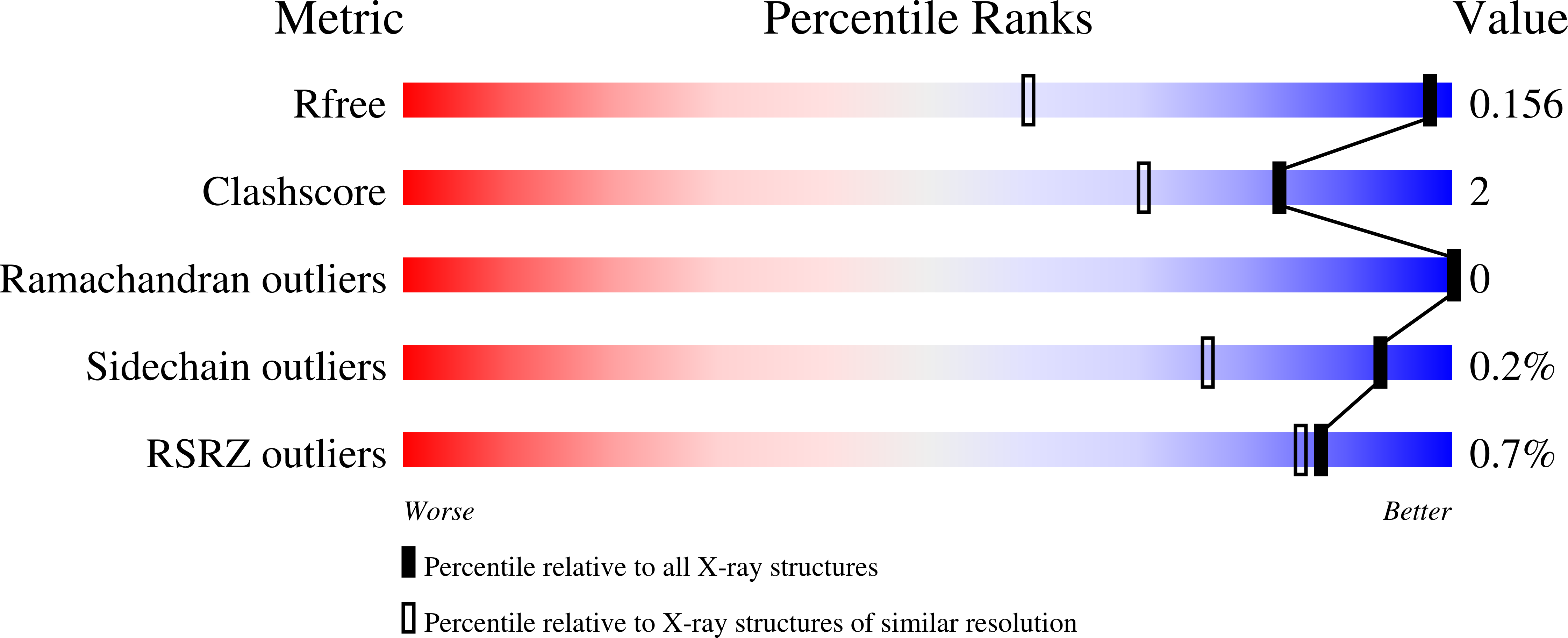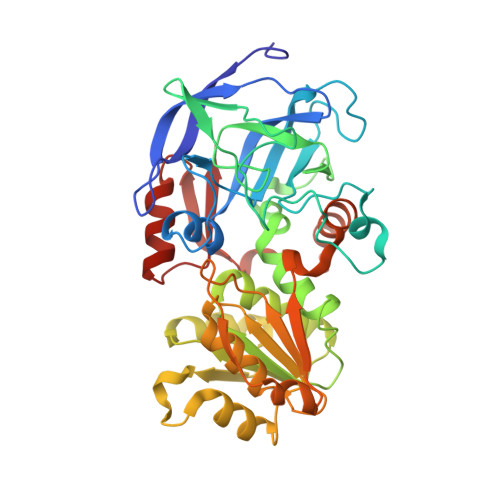Atomic-Resolution Structures of Horse Liver Alcohol Dehydrogenase with NAD(+) and Fluoroalcohols Define Strained Michaelis Complexes.
Plapp, B.V., Ramaswamy, S.(2012) Biochemistry 51: 4035-4048
- PubMed: 22531044
- DOI: https://doi.org/10.1021/bi300378n
- Primary Citation of Related Structures:
4DWV, 4DXH - PubMed Abstract:
Structures of horse liver alcohol dehydrogenase complexed with NAD(+) and unreactive substrate analogues, 2,2,2-trifluoroethanol or 2,3,4,5,6-pentafluorobenzyl alcohol, were determined at 100 K at 1.12 or 1.14 ? resolution, providing estimates of atomic positions with overall errors of ~0.02 ?, the geometry of ligand binding, descriptions of alternative conformations of amino acid residues and waters, and evidence of a strained nicotinamide ring. The four independent subunits from the two homodimeric structures differ only slightly in the peptide backbone conformation. Alternative conformations for amino acid side chains were identified for 50 of the 748 residues in each complex, and Leu-57 and Leu-116 adopt different conformations to accommodate the different alcohols at the active site. Each fluoroalcohol occupies one position, and the fluorines of the alcohols are well-resolved. These structures closely resemble the expected Michaelis complexes with the pro-R hydrogens of the methylene carbons of the alcohols directed toward the re face of C4N of the nicotinamide rings with a C-C distance of 3.40 ?. The oxygens of the alcohols are ligated to the catalytic zinc at a distance expected for a zinc alkoxide (1.96 ?) and participate in a low-barrier hydrogen bond (2.52 ?) with the hydroxyl group of Ser-48 in a proton relay system. As determined by X-ray refinement with no restraints on bond distances and planarity, the nicotinamide rings in the two complexes are slightly puckered (quasi-boat conformation, with torsion angles of 5.9¡ă for C4N and 4.8¡ă for N1N relative to the plane of the other atoms) and have bond distances that are somewhat different compared to those found for NAD(P)(+). It appears that the nicotinamide ring is strained toward the transition state on the path to alcohol oxidation.
Organizational Affiliation:
Department of Biochemistry, The University of Iowa, Iowa City, IA 52242, USA. bv-plapp@uiowa.edu




















